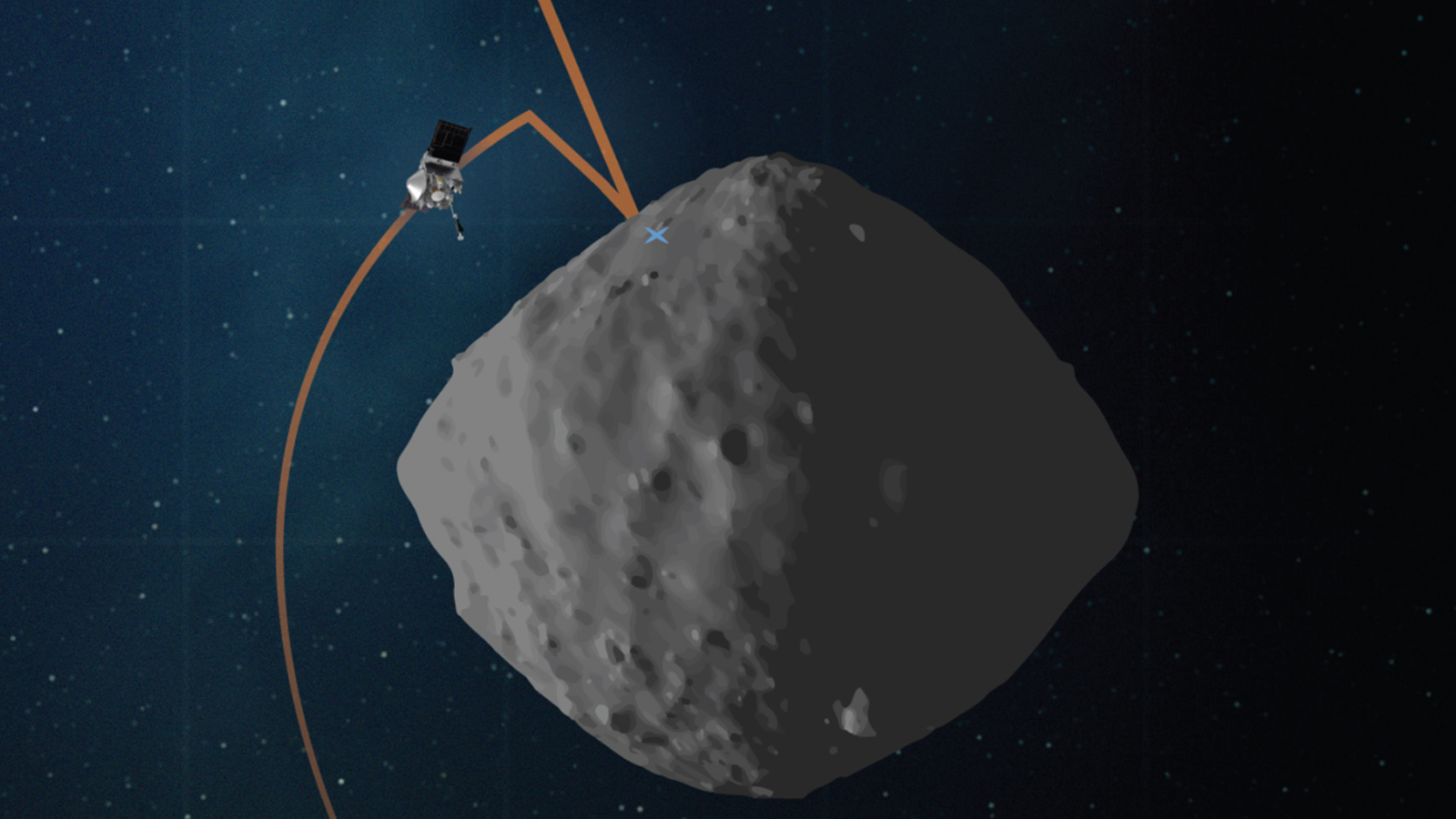Stay Up to Date
Submit your email address to receive the latest industry and Aerospace America news.
Controllers in Colorado must practice social distancing
The inhabitants of Earth may still be social distancing, but tomorrow NASA’s OSIRIS-REx spacecraft will attempt a very close encounter with the near-Earth asteroid Bennu about 330 million kilometers away.
The rehearsal is the last of two leading up to the attempt to suck at least 60 grams of dirt and small rocks off Bennu’s surface for return to Earth, an attempt that NASA was forced to delay from this month to Oct. 20 due to the coronavirus pandemic.
The team has dubbed the rehearsal Matchpoint, because the spacecraft must maneuver toward Bennu and match its orbit to hover 40 meters above its collection target, a sandy area in the north polar region dubbed Nightingale. In an April rehearsal, OSIRIS-REx approached to within 75 meters of the surface.
“It’s an incremental approach that we’re taking to contacting the surface and collecting the sample,” said Dante Lauretta, principal investigator at the University of Arizona, which oversees the science portion of the mission.
NASA needs to verify that OSIRIS-REx’s onboard computer can navigate the spacecraft to the 10-meter-wide swath of Bennu that NASA is targeting for the collection.
Because the spacecraft is too far away for prime contractor Lockheed Martin and NASA flight controllers to send commands in real-time, NASA engineers built the Natural Feature Tracking software, a catalog of photos and models that OSIRIS-REx will consult as it navigates toward the surface. This addition became more important than initially expected once the first fine-resolution photos of Bennu’s surface arrived from OSIRIS-REx two years ago, showing a rough surface littered with craggy rocks and deep craters.
During the approach, the flight computer compares the model of Bennu in the catalog to real-time photos snapped by the navigation camera, NavCam 2. If there’s a disparity between these two sources, the spacecraft will adjust its trajectory to avoid the area.
For tomorrow’s rehearsal, a handful of masked and socially distanced flight controllers will be on hand in Lockheed Martin’s control room in Colorado and NASA’s Goddard Space Flight Center in Maryland to monitor the spacecraft, but the rest of the team will tune in from their home computers. The four-hour event will begin when the spacecraft fires its thrusters to slow itself and start descending toward Bennu from its 870-meter orbit. The spacecraft will proceed just as it would if this were an actual collection attempt: OSIRIS-REx will unfold its robotic arm to point the circular sampling head toward the surface, while moving its two solar panels into a Y-shape so they would not collide with any boulders. OSIRIS-REx will stop at 125 meters and adjust its trajectory if necessary, then fire its thrusters to bring it within 50 meters of the surface. Then comes the Matchpoint burn for which the rehearsal is named. The thrusters will fire to slow the spacecraft and match Bennu’s rotation, until it is 40 meters above Nightingale.
Once controllers are satisfied that OSIRIS-REx has completed the objectives, they will command the spacecraft to return to its 870-meter orbit and retract the sampling arm.
If travel restrictions persist, this setup will also be in practice for the October collection attempt.
“It seems like it’s likely to be the case that we’ll have limited attendance,” said Rich Burns, OSIRIS-REx project manager at NASA Goddard.
About cat hofacker
Cat helps guide our coverage and keeps production of the print magazine on schedule. She became associate editor in 2021 after two years as our staff reporter. Cat joined us in 2019 after covering the 2018 congressional midterm elections as an intern for USA Today.
Related Posts
Stay Up to Date
Submit your email address to receive the latest industry and Aerospace America news.




